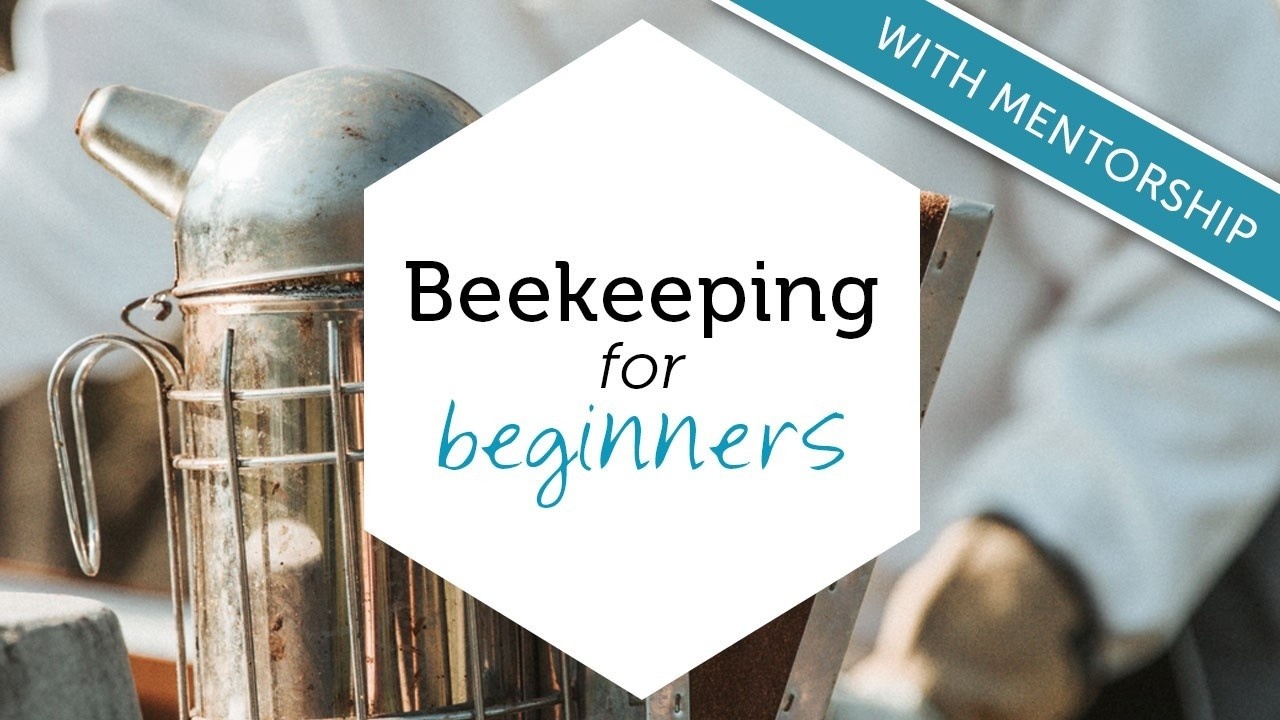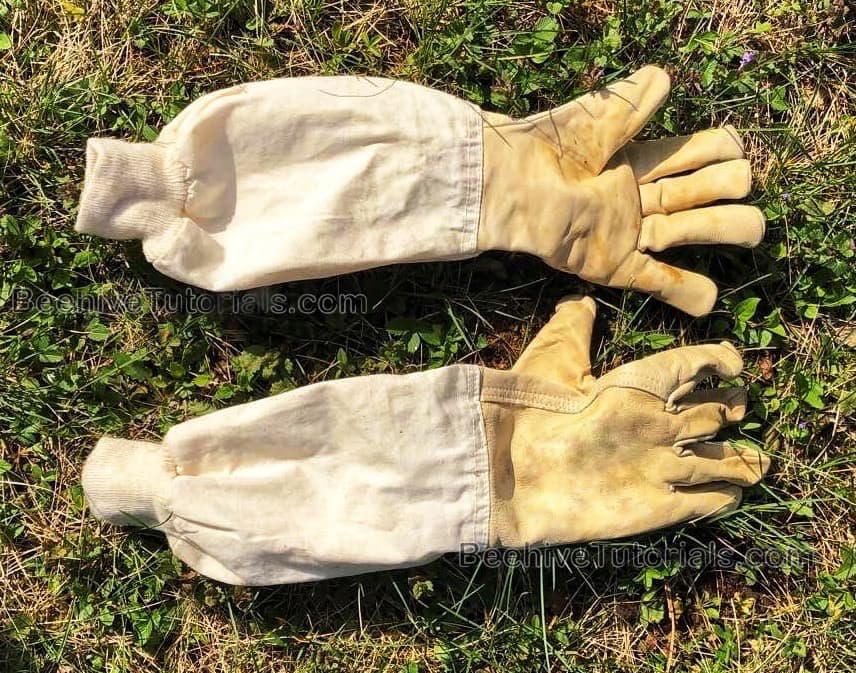The purpose of the beekeeping suite is to protect the beekeeper from getting stung by bees. The face is protected by a veil and the suit can be made of any rough material (usually cotton) or out of a few layers of net so the bees can't get through.
Never open the hive without your beekeeping suit!
Don't believe the pictures and videos where the beekeeper is working with the bees without the beekeeping suite, in shorts and slippers. Even if the bees are calm that can change in a second and if you don't have your beekeeping suit on, it could turn into a disaster.
Bees are wild animals and you never know what can trigger them.
The colony that was calm yesterday can be angry and nervous today and you won't know that until you open the hive.
Accidents happen. You may drop the frame with bees and totally calm bees can transform into a group of angry bees. Or you squish a few of them while putting the frame or box in its place...
You don't want to break the world record in running, don’t you?
Even if everything is going according to plan, there is always that one bee that will, for a reason known only to her, fly up to sting you in your face or any sensitive part of your body.
The very first thing you need to do when going to the apiary is to protect your face and eyes from a possible sting. A sting in the eye can be very dangerous.
Even if you want to just take a look at the entrance of the hive, protect your face with at least a beekeeping hat.
Never open the hive:
![]() In shorts – you don't want bees in your shorts.
In shorts – you don't want bees in your shorts.
![]() In slippers – you don't want to step on a bee.
In slippers – you don't want to step on a bee.
![]() Wearing sleeves and pants with broad openings - it is very unsettling when something is crawling up your leg.
Wearing sleeves and pants with broad openings - it is very unsettling when something is crawling up your leg.
![]() Wearing soft clothes such as sweaters – because when bees land on that surface you will have hard time getting them of you.
Wearing soft clothes such as sweaters – because when bees land on that surface you will have hard time getting them of you.
Advertisement :

Beekeeping for Beginners
Everything you need to know!
This is a full beekeeping course for beginners.
Which beekeeping suit should I buy
Material
![]() Out of firm linen (usually cotton)
Out of firm linen (usually cotton)
![]() Ventilated suit made out of a few layers of net
Ventilated suit made out of a few layers of net
Out of linen
These kind of suits can be made of different thickness. The thicker the linen the hotter you'll be in the suit but the protection from getting stung is better.
The bee can sting through linen if it is tight to your body. This is why the beekeeping suites are wide. It is a good thing if your suite is a little bigger. You can buy a bigger size. The wider the suite the less chance for the bee to sting.
Even if a bee stings you through the suit, the linen will lessen the sting and prevent the stinger to stay in your skin.
Ventilated suits
Ventilated suits are made out of a few layers of net (usually 3). They are usually 3-4 mm thick so the bee can't sting through this kind of suit (unless you press it to the net which is unlikely).
Even though this kind of suits are made to allow the air to flow though them, it can still be very hot in them. They can be very comfy if there is a nice breeze and if not, they can be just as hot or even hotter than the regular linen suits.
This kind of suits are more expensive than the previous ones.
![]() The pros: almost foolproof protection from getting stung and ventilation.
The pros: almost foolproof protection from getting stung and ventilation.
![]() The cons: the net can easily get tangled with the hive parts or frames and, if you're not careful, it can get cut.
The cons: the net can easily get tangled with the hive parts or frames and, if you're not careful, it can get cut.
The whole suit, jacket or hat
The whole suite
The whole suite provides the best protection. Other than that you don't need to think what kind of pants you should put on.
If you are afraid of getting stung get the whole suite.
If you chose the whole suite, don't attempt to do some work in the apiary without the suite just because you are lazy to put it on, even if you just want to take a look.
For this kind of situations you can chose a cheaper back-up beekeeping jacket or a hat but never go without any protection. It is better to take one minute more to put on a suite than to have a swelling on your face for a few days.
Beekeeping jacket
If you're not too scared of getting stung, you can choose a beekeeping jacket with veil.
Beekeeping jacket provides good protection, although sometimes (rarely) a bee can get under the jacket. That is why you need to pay attention to the elastic at the lower part of the jacket, it needs to stick to the body as much as possible.
If you choose a beekeeping jacket you will need to have pants made out of a rougher material. These can be an old pair of jeans, but not the tight ones. A bee can sting you thorough them if they are tight to your legs.
Beekeeping pants can also bee purchased out of the same material as the jacket but it is not necessary. Jeans are totally fine.
Hat
A hat only protects your face. It is easy for the bees to get under the veil. That is why a hat isn't something you want to wear when inspecting the hives. While working with bees you need to have a complete suite or a beekeeping jacket.
However a hat can be useful when only checking the entrance of the hive or while feeding the bees. In these kinds of situations there is no need to put on a beekeeping suite but it is advisable to protect your face just in case a bee suddenly decides to attack you.
That is why it is a good idea to purchase a hat to go along with the suite. That way you won't get tempted to come close to hives without any protection. Because unlike the suite that you need to put on, a hat is something you just place on your head in a second.
Two kinds of veil for a full suite and for a beekeeping jacket
While buying the suite you will have to choose from two kinds of veil:
![]() Round veil (hat) or
Round veil (hat) or
![]() Fencing veil
Fencing veil
Fencing veil
Fencing veil is designed in a way so you don't get too hot under it. However, since it doesn't have a round brim that holds the net far from the face, the net can easily touch your face and you can get stung. This is why some people wear baseball hat under the fencing veil (but then the primary advantage - not very hot - is lost).
Round veil - hat
We prefer round veil (shaped like a hat). A round hat keeps the veil far from the face so there is no danger of getting stung. Other than that visual field is much wider.
Things you should pay attention to, while buying the suite
![]() Pay attention to the elastics around your hands and legs, they need to be of a good quality and to stick well to your joints. Same rule applies to the elastic at the bottom of your jacket. These elastics need to prevent the bees from getting under your clothes. If they are of poor quality they will loosen over time and won't get the job done.
Pay attention to the elastics around your hands and legs, they need to be of a good quality and to stick well to your joints. Same rule applies to the elastic at the bottom of your jacket. These elastics need to prevent the bees from getting under your clothes. If they are of poor quality they will loosen over time and won't get the job done.
![]() Also pay attention to the zippers. They need to close well because if there is a hole somewhere the bees will find it and you will have buzzing from inside of your veil which isn't fun at all.
Also pay attention to the zippers. They need to close well because if there is a hole somewhere the bees will find it and you will have buzzing from inside of your veil which isn't fun at all.
![]() Choose a suit which zippers are overlapping and have a linen protection with a velcro over them.
Choose a suit which zippers are overlapping and have a linen protection with a velcro over them.
![]() The suit shouldn't be tight to your body or the bees will sting you. It should be wide but with elastics that hold well so nothing can get inside.
The suit shouldn't be tight to your body or the bees will sting you. It should be wide but with elastics that hold well so nothing can get inside.
Beekeeping gloves
Beekeeping gloves are used to protect the hands of the beekeeper. They are made out of leather with long linen sleeves and with elastics at the end which prevents the bees from getting inside the gloves.

Only beekeeping gloves provide protection. Any other gloves won’t protect your hands well.
Experienced beekeepers sometimes work without gloves but do have beekeeping gloves that they use when bees are angry.
In beginning you should work with gloves until you gain some experience. And when you feel comfortable you can try to work without them if you want. However, always keep one pair near you, just in case.
Shoes
Don't forget about the shoes.
Boots provide the best protection. Some ankle deep shoes will do the job as well. You need to be able to tuck in your pants so the bees don't get inside them or sting you on your ankles.